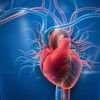How Exercise Plays a Vital Role in Preventing Heart Disease
- Introduction
- Why Exercise Is Essential for Heart Health
- How Exercise Reduces Heart Disease Risk
- Real-Life Examples of Heart Disease Prevention
- Practical Exercise Tips for Heart Disease Prevention
- Conclusion
Understanding the Role of Exercise in Heart Disease Prevention
Heart disease remains one of the leading causes of death worldwide, but research has shown that incorporating regular physical activity can significantly reduce the risk. Exercise has long been touted as a powerful tool in promoting cardiovascular health, and its benefits extend far beyond mere weight management. By integrating exercise into your daily routine, you can bolster heart health, enhance your endurance, and reduce factors that contribute to heart disease.
Why Exercise Is Essential for Heart Health
When it comes to preventing heart disease, exercise serves as one of the most effective strategies. Cardiovascular diseases, including heart attacks, stroke, and hypertension, often stem from sedentary lifestyles, poor diet, and stress. Exercise can counter these risk factors by improving blood circulation, reducing cholesterol levels, and maintaining a healthy weight. Regular physical activity helps the heart pump blood more efficiently, lowering blood pressure and reducing the strain on the cardiovascular system.
Moreover, exercise aids in maintaining optimal blood sugar levels, thus preventing or managing conditions like type 2 diabetes, which is closely linked to heart disease. A well-balanced exercise routine can provide long-term protection against these serious health issues.
How Exercise Reduces Heart Disease Risk
Exercise influences several factors that directly impact heart health. For instance, physical activity helps improve the levels of high-density lipoprotein (HDL) cholesterol—the "good" cholesterol—while simultaneously lowering low-density lipoprotein (LDL) cholesterol and triglyceride levels, which are known to contribute to plaque buildup in arteries. This process, known as "arterial plaque reduction," lowers the risk of atherosclerosis, a condition that narrows and hardens the arteries, leading to heart disease.
Furthermore, exercise helps regulate blood pressure by enhancing the elasticity of blood vessels. This is critical because high blood pressure is a significant risk factor for heart disease. Regular exercise also reduces inflammation, another key contributor to the development of cardiovascular diseases.
In addition to these physiological mechanisms, exercise helps manage stress. Stress is often linked to the development of heart disease, as it can lead to unhealthy behaviors such as smoking, overeating, and poor sleep. By reducing stress and boosting mood, exercise provides a holistic approach to managing both mental and physical health.
Real-Life Examples of Heart Disease Prevention
Many success stories demonstrate the power of exercise in preventing heart disease. Take, for example, the story of John, a 52-year-old man who was diagnosed with high blood pressure and elevated cholesterol. His doctor recommended a routine of moderate aerobic exercise, such as brisk walking and cycling, combined with strength training exercises. After just a few months, John's cholesterol levels improved, his blood pressure normalized, and he lost 15 pounds. His doctor was astounded by the results, as John significantly reduced his risk for a heart attack without the need for medication.
Similarly, studies show that women who engage in regular physical activity, such as swimming or running, have a lower risk of developing heart disease later in life. This is particularly important, as heart disease is the leading cause of death among women globally.
Practical Exercise Tips for Heart Disease Prevention
Incorporating exercise into your lifestyle doesn't have to be overwhelming. Here are some practical tips to get started:
- Start Slow: If you're new to exercise, begin with low-intensity activities such as walking, swimming, or cycling. Gradually increase the intensity as your endurance improves.
- Aim for Consistency: Aim for at least 150 minutes of moderate aerobic exercise or 75 minutes of vigorous exercise per week. Spread this activity out over the week to avoid burnout.
- Incorporate Strength Training: Include muscle-strengthening activities at least two days a week to improve overall cardiovascular health and build muscle mass.
- Stay Active Throughout the Day: Take the stairs instead of the elevator, walk or bike to work, and take frequent breaks from sitting to stretch and move around.
Conclusion
Exercise is a powerful tool in the fight against heart disease. By committing to regular physical activity, you can reduce your risk of heart disease, improve cardiovascular health, and increase your overall quality of life. Whether you're just starting or have been active for years, the benefits of exercise for heart health are undeniable. Take the first step today toward a healthier, more active lifestyle, and your heart will thank you for it.
Ready to get started? Explore our collection of heart-healthy exercise equipment to help you take the next step in your journey toward heart disease prevention. Invest in your health today!




















